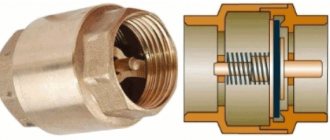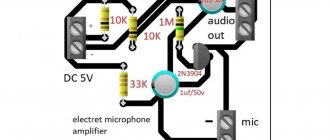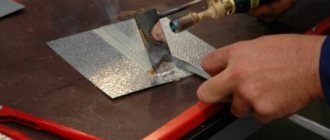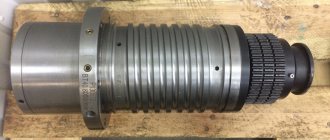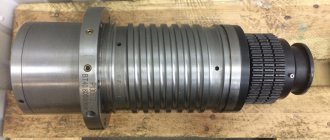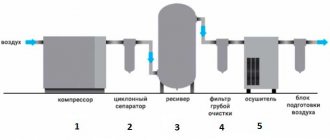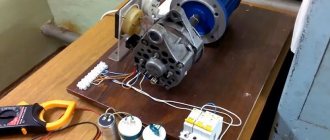What is a fire stop valve?
A fire suppression valve is a device for monitoring the safety of technical gases, which protects against leakage and backfire. It prevents air or oxygen from entering supply lines or single cylinders and prevents flashback and subsequent gas supply in the event of a flame backstroke. Built-in filters provide protection against contamination and guarantee long service life and operation of the equipment. Thus, a fire suppression valve is a safety protection device that must be used when working with any autogenous equipment to ensure compliance with labor protection requirements and industrial safety measures.
Oxygen fire-retardant valve for cutter and burner KOK PTK 00000025601
- Gas type: oxygen
- Input connection: M16x1.5LH
- Output connection: M16x1.5LH
- Installation: cutter/torch
All characteristics
Price per pack of 4 pcs: 1,920 rub. Price per one. product: 480 rub. 554 rub.
Write off up to 222 rubles. bonuses We will award 5 bonuses
- In your city: 2 pcs. In stock: 24 pcs.
- Pickup: today, from 1 store
- By courier: tomorrow, from 190 rub.
The fire-stop oxygen valve for the cutter and burner KOK PTK 00000025601 is designed to protect against gas backflow, as well as to protect against rupture of the oxygen rubber-fabric hose and its ignition during a backfire. The valve is installed on the cutter or torch. Connection - union nut/input thread M16x1.5.
The main advantage of the valve is the delay of gas counterflow at a pressure of 0.03 kgf/cm2 or more. The direction of gas flow is indicated by an arrow on the sticker.
- Combustible gas: Oxygen
- Installation location: Cutter or torch
- Connection: Union nut/input thread M16x1.5
- Throughput, m³/hour: 40
- Working pressure, MPa: 1.25
Design and design features of Messer fire protection valves
All safety devices are structurally designed to have several degrees of protection, which are provided by different elements: safety valve, check valve, fire barrier element and flow cutoff. Each of these elements serves as a separate security device, and the elements combined in one product provide comprehensive and multi-level human safety and the safety of expensive equipment.
- Inlet filter. Provide protection against contamination and guarantee long service life and operation of autogenous equipment
- Safety valve. Gas controlled pressure cuts off gas flow if shock waves occur. Gas supply can be restored manually (DS model only)
- Check valve. The check valve allows gases to flow in only one direction and reliably prevents creeping or sudden backflow of air or oxygen into the distribution system or individual cylinder
- Fire retardant element. Stops any flame coming from the gas outlet and reduces the flame temperature to below the flash point so that the gas in the inlet zone cannot ignite
- Flow cutoff. The flow shut-off valve consists of a spring-loaded valve, which is held in place by a fusible link. If the safety device becomes hot due to flash or kickback, the valve is automatically closed by melting the bridge, thereby cutting off the gas flow
All these components are fully implemented in any protective device from Messer.
- Inlet filter. Provide protection against contamination and guarantee long service life and operation of autogenous equipment
- Safety valve. Gas controlled pressure cuts off gas flow if shock waves occur. Gas supply can be restored manually (DS model only)
- Check valve. The check valve allows gases to flow in only one direction and reliably prevents creeping or sudden backflow of air or oxygen into the distribution system or individual cylinder
- Fire retardant element. Stops any flame coming from the gas outlet and reduces the flame temperature to below the flash point so that the gas in the inlet zone cannot ignite
- Flow cutoff. The flow shut-off valve consists of a spring-loaded valve, which is held in place by a fusible link. If the safety device becomes hot due to flash or kickback, the valve is automatically closed by melting the bridge, thereby cutting off the gas flow
Oxy-fuel cutting safety: check valves and fire stop valves
Check valves and fire arrester valves are necessary to ensure the safety of workers who use oxy-fuel welding, cutting, heating (pre-heating or auxiliary heating) in the production process and to protect equipment such as furnaces, pipelines, discharge ramps.
A check valve is a device designed to prevent the unintentional backflow of gas.
The fire arrestor valve (fire arrester) prevents the spread of flame upstream of the gas.
Please note that these devices reduce the volumetric flow of gases.
Nature of the danger
Always check that there is enough gas in both cylinders to complete the operation before starting work. Gas backlash typically occurs when one cylinder becomes empty during operation, creating a pressure imbalance in the system. A clogged (clogged) or blocked (crushed) tip or torch can also cause backflow. An extremely dangerous situation can develop when oxygen and flammable gases mix inside hoses. Backflow check valves alone cannot stop the spread of flames in a system. When oxy-fuel processes (welding, cutting, heat treating, etc.) are conducted, operators may experience kickback or backfire.
Character of the blowback (flame)
Option 1
Backfire is characterized as an instantaneous loss of flame in the burner (mouthpiece), potentially causing the fire arrester to trip or ignite gas in the supply circuits. This is usually accompanied by a popping sound, after which the flame may go out or restart on the burner. The user hears a “pop” and the flame goes out. This can happen when:
- high gas flow rates at the nozzle or tip;
- if the nozzle or tip is too close to the metal being processed.
The flame may re-ignite automatically (from hot metal) or require the use of an igniter. This is usually not safe to do, so many manufacturers consider the effects of kickback or backfire during design and production testing to ensure the integrity of cutters, torches, etc.
Option 2
Also, a backfire may be characterized by a decline in the flame in the burner (mouthpiece) with continued combustion in the burner/cutter channel. This option is characterized by an initial crackling sound followed by a squealing or hissing sound and can potentially burn through the body of the torch or cutter.
Option 3
Ignition is defined as the flame declining through the burner and moving into the hose, reducer and/or cylinder, potentially causing an explosion. This is a potentially dangerous situation, especially if the flame reaches the hoses, where an explosion will cause the hose to rupture. Ignition is typically caused by gas backflowing upstream into hoses or other equipment. This backflow is usually the result of the following:
- improper shutdown and/or startup procedure;
- the pressure in one of the gas sources becomes too low;
- Due to the pressure difference and a faulty check valve, one of the gases presses on the other, thus the flame passes through the burner into the hose, regulator and / or cylinder, potentially causing an explosion.
As with any cutting or welding operation, workers must be aware of their work area and where the work is being done. Working fire extinguishers should be kept nearby at all times and all personnel should be trained in their correct use. Backfire can damage equipment and cause injury to other workers and equipment. A properly organized workplace, the use of protective devices and compliance with safety regulations minimize the fire hazard and injury to personnel.
How to avoid danger
- Use equipment with built-in non-return and fire arrester valves.
- Install check valves and/or fire arresters to existing equipment if they are not available.
- Inspect the entire system before use and repair or replace faulty or damaged parts as necessary.
- Allow only qualified and trained personnel to repair and service equipment.
- Before starting work, conduct full training of personnel on how to operate this type of equipment.
- Make sure there is enough gas in the cylinders to complete the job.
- Follow the manufacturer's recommendations for proper starting and stopping procedures and operating rules.
- Do not allow the tip/mouthpiece/torch to touch metal.
SUMMARY
!!!!!Fire arresters and check valves do not replace the rules for safe work with gas-flame equipment!!!! They provide an increased level of protection in addition to the equipment manufacturer's recommendations. Check valves and fire arresters must be installed in the location specified by the manufacturer.
Responsible manufacturers have begun to include fire arresters and check valves as standard with all burners and cutters sold.
Optimal burner configuration from IBEDA
A fire arrester and check valve serve as an additional safety element, but do not exclude the need to maintain the proper level of safety of work and technical condition of the equipment. In most cases, a set of fire arrester and check valves allows you to avoid more serious problems caused by human factors and equipment malfunctions.
Download Oxy-fuel cutting safety - check valves and fire stop valves
Order fire protection and check valves
Receive a free consultation on selecting the optimal solution by phone:
8 (calls within Russia are free)
Resources used to write the publication: www.aws.org; www.nfpa.org; www.cganet.com
Features of the use of safety devices
- Each installed protective device in front of the burner (quick coupling, kickback valve) impedes the gas flow
- Depending on the given amount of gas flow required, different sizes of kickback valves must be used
- The pressure entering the kickback valve is always greater than the pressure leaving the kickback valve
- The required operating pressure (set) must be available at the outlet of the kickback valve
- Each kickback valve inside the kickback device will become dirty during use due to dirty gas, so the outlet pressure will be reduced over time
- More pollution leads to a decrease in gas flow
- The capacity of a kickback valve indicates how long it can be used
- Each kickback valve should be inspected once a year.
Quickly search for consumables
Packaging is more profitable! Price per pack of 4 pcs.: RUR 1,896. Price per one. product: 474 rub. 538 rub.
Packaging is more profitable! Price per pack of 4 pcs.: RUB 2,812. Price per one. product: 703 rub. 778 rub.
Packaging is more profitable! Price per pack of 4 pcs.: RUB 2,812. Price per one. product: 703 rub. 778 rub.
Packaging is more profitable! Price per pack of 4 pcs.: RUB 2,812. Price per one. product: 703 rub. 778 rub.
Packaging is more profitable! Price per pack of 4 pcs.: RUB 2,812. Price per one. product: 703 rub. 778 rub.
Packaging is more profitable! Price per pack of 4 pcs.: RUB 2,812. Price per one. product: 703 rub. 778 rub.
Packaging is more profitable! Price per pack of 4 pcs: 1,388 rub. Price per one. product: 347 rub. 393 rub.
Packaging is more profitable! Price per pack of 4 pcs: 1,388 rub. Price per one. product: 347 rub. 393 rub.
Packaging is more profitable! Price per pack of 4 pcs: 1,484 rub. Price per one. product: 371 rub. 428 rub.
Packaging is more profitable! Price per pack of 4 pcs: 1,388 rub. Price per one. product: 347 rub. 393 rub.
Packaging is more profitable! Price per pack of 4 pcs: 1,484 rub. Price per one. product: 371 rub. 428 rub.
Packaging is more profitable! Price per pack of 4 pcs: 1,484 rub. Price per one. product: 371 rub. 428 rub.
Packaging is more profitable! Price per pack of 4 pcs: 1,388 rub. Price per one. product: 347 rub. 393 rub.
Packaging is more profitable! Price per pack of 4 pcs: 1,388 rub. Price per one. product: 347 rub. 393 rub.
Packaging is more profitable! Price per pack of 4 pcs.: RUB 2,324. Price per one. product: 581 rub. 654 rub.
Packaging is more profitable! Price per pack of 6 pcs: RUR 3,486. Price per one. product: 581 rub. 654 rub.
Packaging is more profitable! Price per pack of 4 pcs.: RUB 2,324. Price per one. product: 581 rub. 654 rub.
Packaging is more profitable! Price per pack of 4 pcs.: RUB 2,572. Price per one. product: 643 rub. 742 rub.
Packaging is more profitable! Price per pack of 4 pcs: 1,440 rub. Price per one. product: 360 rub. 415 rub.
Packaging is more profitable! Price per pack of 4 pcs: 1,440 rub. Price per one. product: 360 rub. 415 rub.
Tester for fire protection valves
The Messer company produces a special device with which the consumer can independently periodically check the functionality of fire arrester valves.
The kit includes adapters for various standard sizes for connecting safety devices. Using the device you can check: function of the gas outlet valve, tightness, flow.
Consequences of working without safety devices
Extraordinary and emergency situations can arise in absolutely any production. Working with autogenous equipment is dangerous and requires additional measures to prevent the occurrence of such situations, as well as to minimize their consequences. Of course, when working with a cutter or burner, a lot depends on the experience and qualifications of the employee, but it would be very reckless to rely entirely on the fact that the staff has been working for a long time, knows everything and can do it. Let's imagine what the consequences of a reverse strike could be:
- injury to worker's hands and eyes
- damage to equipment (hoses, reducers, burners, cutters, gas intake points)
- fire in the enterprise
The essence and causes of kickback
Flame strike during gas flame operations occurs when the gas begins to burn in the opposite direction to its natural flow. In such a situation, the rate of gas combustion is higher than the rate of its expiration and the flame begins to rapidly move towards the source, which can lead to rupture of the hose, reducer, cylinder, not to mention a high danger to the health of the operator. The main reasons for this situation include:
- incorrect adjustment of the flammable gas supply;
- excessive heating of the mouthpiece, resulting in self-ignition of the gas mixture even before it leaves the burner;
- the presence of debris in the gas line that disrupts the normal flow of gas;
- an empty oxygen, acetylene or propane cylinder, which can lead to a sudden change in pressure in the system.
According to GOST 12.2.008-75, to prevent an emergency, each gas dispensing station must be equipped with a safety valve - a non-return valve or a fire-preventing valve. If a conventional return device is used, it should be taken into account that it cannot ensure complete safety of operation of gas-flame equipment, since it only provides protection from a shock wave and is not intended to prevent the spread of flame (see paragraph 3.2 of GOST R 50402-2011 (ISO 5175:1987) ).
Differences between the described devices:
Therefore, in order to block the flame front directed to the cylinder and prevent the container from catching fire, fire fuses should be installed. More details about the safe operation of cylinders and their use during gas welding work using acetylene as an example can be read in the article: Technical dissolved acetylene for cutting and welding metals.
Diagram of the functioning of the fire-preventing valve
Our operating principles
- the highest level of human safety when carrying out gas-flame work
- the highest quality of all equipment and each of its components
- high-quality original consumables and prompt technical support for all questions that arise
By implementing these principles in each of our proposals or consultations, we offer the optimal solution to the assigned tasks for your production. We guarantee safety, excellent quality, reliability and savings. You can buy any gas-flame equipment and original accessories manufactured by Messer Cutting Systems in Moscow at an affordable price from ITS-Engineering LLC. We accept applications by email. You can get professional advice by contacting +7 (495) 660-62-72.
